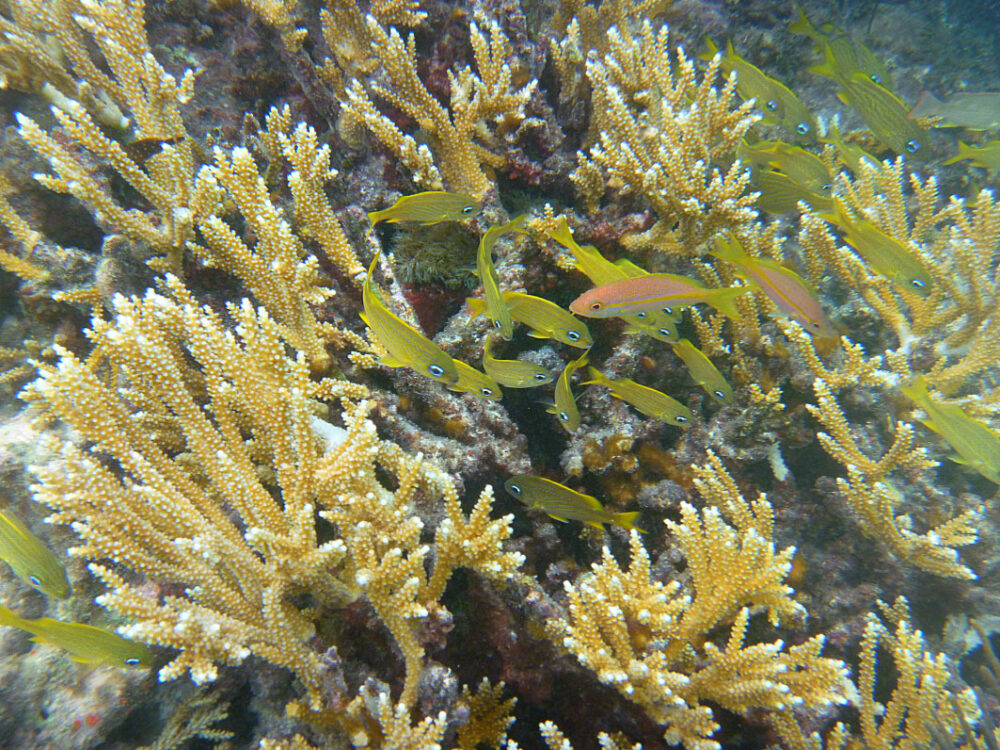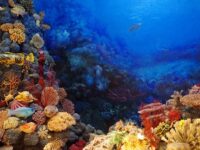Coral reefs are not only beautiful scapes of nature but also home to the most diverse ecosystems in the marine world. Being the home of thousands of fish, hundreds of corals, and many other various organisms, scientists have been investigating ways to combat the dangers to the reefs caused by global climate change.
A currently endangered coral, staghorn corals, used to be one of the most abundant species in the Caribbean reefs. These corals have been present in wide expanses of the Caribbean for over 5,000 years and are known for their antler-like branches that stem up and outward from their bases. Because of the staghorn’s dense growth pattern, the reef was the home of many sea animals. However, in the 1980s, a severe disease wiped out nearly 97 percent of the staghorn coral population. According to the National Oceanic and Atmospheric Administration (NOAA), this disease was called the white band disease, which caused the corals’ tissues to degrade. Previously, staghorn corals lived in vast stretches along the coasts of the Caribbean, but now, they only exist in small colonies and isolated tufts. After already suffering a sharp decline in its population, the staghorn coral, along with other reef organisms, continue to suffer from the effects of global warming.
A currently endangered coral, staghorn corals, used to be one of the most abundant species in the Caribbean reefs.
With climate change come increases in atmospheric temperature and carbon dioxide levels. The atmospheric temperature also causes an increase in ocean temperatures. This increase in temperature causes staghorns to release the algae that typically serve as their food source, resulting in their deaths. Additionally, the increase in atmospheric carbon dioxide makes the ocean more acidic. The higher acidity of the ocean dissolves the corals’ skeletons, which also results in death because of their fragility.
These negative impacts on an already endangered species leave scientists and marine biologists with the challenge of trying to rebuild these precious ecosystems. To try to prevent further coral reef death or possibly reverse the effects of human activities, scientists are performing multiple different types of restoration projects. One of which is propagation and outplanting; this approach requires scientists to grow coral seedlings in well-regulated nurseries and, once strong enough, replant the new coral fragments into the diminishing reefs.
Most recently, in a study done at the Shedd Aquarium and the University of Miami Rosenstiel School of Marine and Atmospheric Science, scientists explored the idea of artificially selecting and replanting staghorn corals in an environment that is most compatible with their genetic and phenotypic ability to resist heat. Throughout 2020, the team took up small fragments of coral and had them undergo a heat resistance test in a series of stress tanks to determine each strain’s ability to withstand warmer ocean temperatures. Additionally, the DNA from the various coral fragments were analyzed to look for possible genetic influences on heat resistance.
From the 229 corals taken from six different coral nurseries off the coast of Florida, the results showed a wide variation within nurseries, rather than between them. From this, it can be deduced that there is likely a genetic influence on the heat tolerance of the staghorn corals. However, by gaining the ability to determine which strains within the nurseries are more heat resistant than others, scientists optimize restoration through propagation and outplanting. Higher heat–resistant corals can be planted in the shallow, warmer reef sections, while the lower heat–resistant corals could be planted in the deep reef sections where the ocean temperature is more resistant to temperature changes.
By gaining the ability to determine which strains within the nurseries are more heat resistant than others, scientists optimize restoration through propagation and outplanting.
Through this research, along with more studies to analyze the effects of climate change on coral reefs around the globe, scientists optimize the different restoration methods that could be revolutionary for saving the reefs. Although this study was only performed off the coast of Florida, further monitoring of the optimized propagation must be analyzed to assess the method’s effectiveness and applicability to reefs in other parts of the world. However, if research continues along this trend, a multitude of fish and coral species will be able to flourish despite the harsh environmental effects humans continue to have on the Earth.
Proceedings of the Royal Society B: Biological Sciences (2021). DOI: 10.1098/rspb.2021.1613






